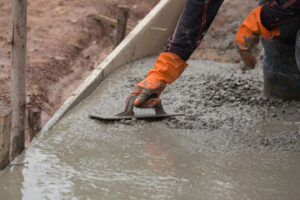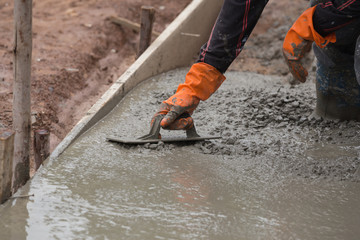Concrete has long had a bad rap but it is a fairly easy material to repair and replace. It just takes the right products and a bit of know-how.
Cracked concrete around your home looks unsightly but it can also be a safety hazard, especially for young children or elderly residents. Small repairs done quickly will prevent major damage to your concrete later. By hiring Concrete Contractors Colorado Springs, you’ll save yourself time and money.
 Cracks
Cracks
Concrete is a durable, long-lasting construction material, but like most commonly used building materials it will develop cracks over time. This is an inevitable process that must be dealt with, especially if the cracks are in walkways or patios where they can become a major tripping hazard. Concrete crack repair is a delicate process that needs to be completed correctly. It requires the right materials, the proper application techniques, and the right drying conditions to ensure that the cracks don’t reappear or worsen over time.
A qualified concrete contractor can help determine the cause of the cracking and suggest a repair option that’s best for you. Some cracking is due to structural concerns, such as load-induced or intrinsic volume changes that may impact the load-carrying capacity and safety of the structure. These cracks require a more serious solution than other types of cracking.
Other cracking is caused by external factors such as freeze/thaw cycles, Alkali-silica reaction (ASR), or the presence of chloride ions in the concrete that corrode the steel reinforcing bars – all of which need to be addressed. Cracks that are static and non-moving can often be filled with a low-viscosity repair product and sealed with a flexible sealant to prevent moisture intrusion and further cracking.
The first step is to clean the crack and remove any loose debris. A router tool is then used to cut a V-shaped groove along the length of the crack. This helps to allow for movement, reduce stress at the crack’s edge, and relieve any pressure that could cause further damage. The crack is then filled with a low-viscosity concrete repair product.
Many different products on the market can be used to fill and seal concrete cracks. Some of these include epoxy compounds and latex patching materials. These can be found in home improvement stores or online. It’s important to choose a long-lasting product that is specifically designed for use on concrete.
Once the crack has been filled and sealed it’s important to let the repair cure for some time. It’s also recommended that a topcoat is applied over the surface to protect it from further damage and to give the concrete a brand-new look.
Holes
Holes can be caused by several different issues, but they can usually be repaired with concrete patching material. The first step is to remove any loose debris from the hole. If the hole is very large, it may be necessary to break away some of the surrounding concrete. You can also use non-destructive evaluation techniques such as radar, infrared thermography, and impact echo to help determine how much of the concrete is affected by the problem.
Once the area is clear, it’s important to power wash the hole and surrounding area. This will help ensure that the repair is as clean and solid as possible.
The next step is to mix the concrete repair mortar to a “clay” consistency. It’s recommended that you use a rapid-set concrete mix for this repair, as it will make the job much easier.
This type of concrete has a higher water content than standard concrete, and it will be set within five minutes. This will give you enough time to work the concrete into a smooth surface and fill the holes.
When you’re finished, use a concrete trowel to smooth the patch and blend it into the existing concrete. Be sure to work around the edges of the hole as well. This will help ensure that the new concrete is strong and durable and will not pull away from the old concrete.
Finally, it’s important to keep in mind that any concrete repairs must be adequately moist-cured. This is because the bond strength between the new and old concrete develops over some time and moisture. If you don’t allow enough time for this, the repaired concrete will be more prone to cracking and failing.
If you’re concerned about the state of your concrete, you should consider having it professionally inspected and repaired. This will help extend the life of your concrete and will protect your home or business for years to come. If the concrete is already showing signs of damage, however, it may be better to replace it rather than try to repair it.
Leaks
A water leak in a concrete slab is a serious problem that can cause significant structural damage to a home. Whether it’s the result of a plumbing leak, running groundwater, or poor installation, any leaking concrete should be fixed immediately to prevent further damage. Luckily, there are many different ways to repair concrete leaks. Here are a few of them:
A spot repair is ideal for a single leak that is easy to reach. It involves hacking through the concrete with a small jackhammer and replacing a short section of pipe. It’s an option that is usually reserved for commercial plumbing, but it can be a good choice for homes. This method is expensive and disruptive, but it can stop the leak and prevent further damage.
In the case of a slab leak, it’s best to hire a professional for this type of repair. These professionals have the experience and equipment to tunnel through dirt and concrete to find the source of the leak. They use tracing tools to find the path that the copper line runs and listening equipment to hear the noise of the leaking water. Once they’ve located the location of the leak, they can tunnel to that point and make the necessary repairs.
Slab leaks are very dangerous and can be difficult to detect. Eventually, they can start to warp floors, foster mold growth, create sinkholes, and destroy the foundation of the house. This is why it’s important to have a professional diagnose the problem as soon as possible.
The first step to preventing slab leaks is properly waterproofing the concrete. This will protect the concrete from the elements, reduce the amount of water that seeps into the slab, and prevent further damage. However, if the concrete has already sustained extensive water damage, a more comprehensive solution may be required. This could include re-routing the pipes or replacing them entirely.
Slabs
Concrete is one of the strongest construction materials available. However, it is not indestructible. Over time, normal wear and tear, accidents, and improper installation can shorten its lifespan. Repairing damaged slabs helps extend their life cycle. However, there comes a point where it makes more sense to replace the concrete rather than repair it.
Concrete repairs have come a long way in the last decade, and they are now much less invasive than total replacement. For example, hairline cracks can often be repaired using a polyurethane concrete lifter or a chemical injection. For large cracks or damage that is not easily repaired, a new concrete pour may be necessary.
Slab leaks are a major problem and should never be ignored, because water under slabs can cause serious property damage that your homeowners’ insurance may not cover. It’s important to call plumbers who are experienced in finding slab leaks. They can use acoustic, sonic, pressure, and electromagnetic tools to find the source of the leak and then fix it before it gets worse.
Soil erosion and settlement can sink concrete slabs, causing them to lose their support. This can be dangerous for people walking on them, as it creates a trip hazard and makes pools of water form around them. Slabs that sink are also expensive to repair, and homeowners’ insurance usually won’t cover them.
For many homeowners, repairing their concrete is more cost-effective than replacing it, but deciding whether to repair or replace your concrete isn’t as simple as that. The most important thing to remember is that if your concrete has reached the end of its lifespan or there are deep cracks, it makes more sense to replace it than to try and repair it.
Replacing your concrete will involve jackhammering out the old concrete, stabilizing the soil underneath, and then preparing and pouring new concrete. This is a messy process that involves a lot of equipment, dirt, and noise. It’s also an expensive project, and unless the damage to your concrete is severe, it’s unlikely that you’ll get any return on investment.

